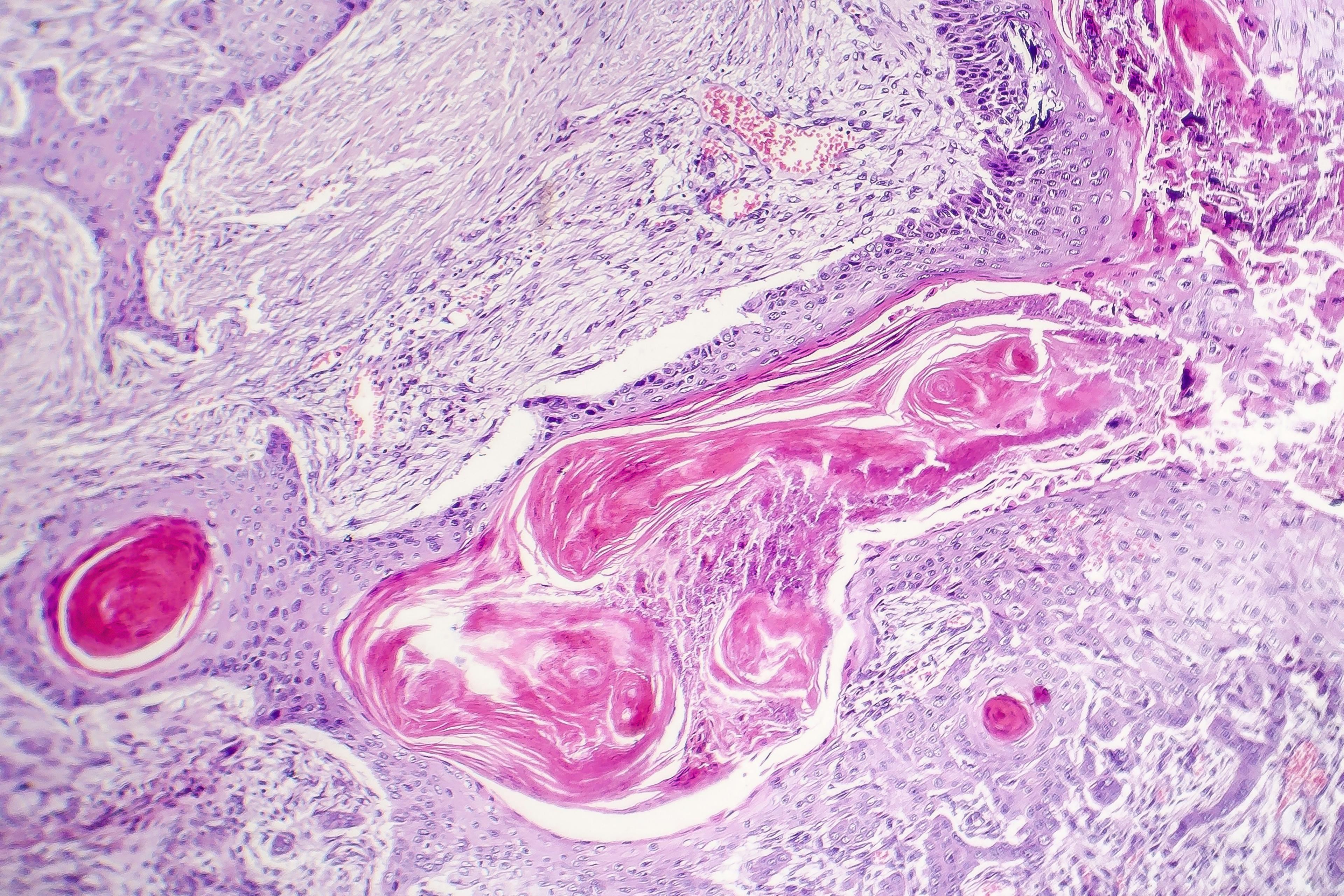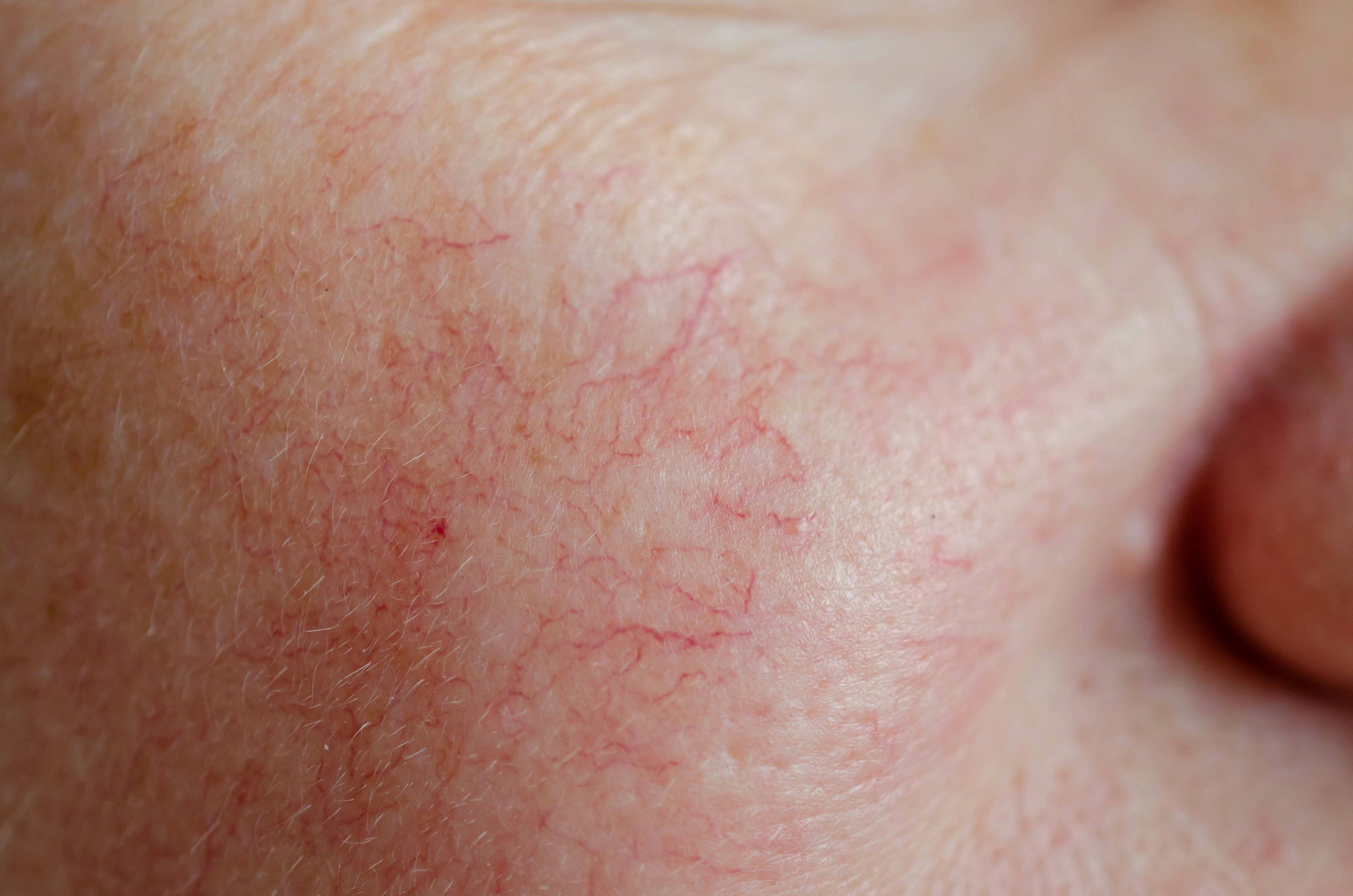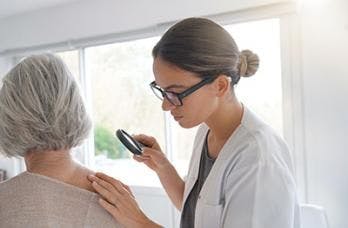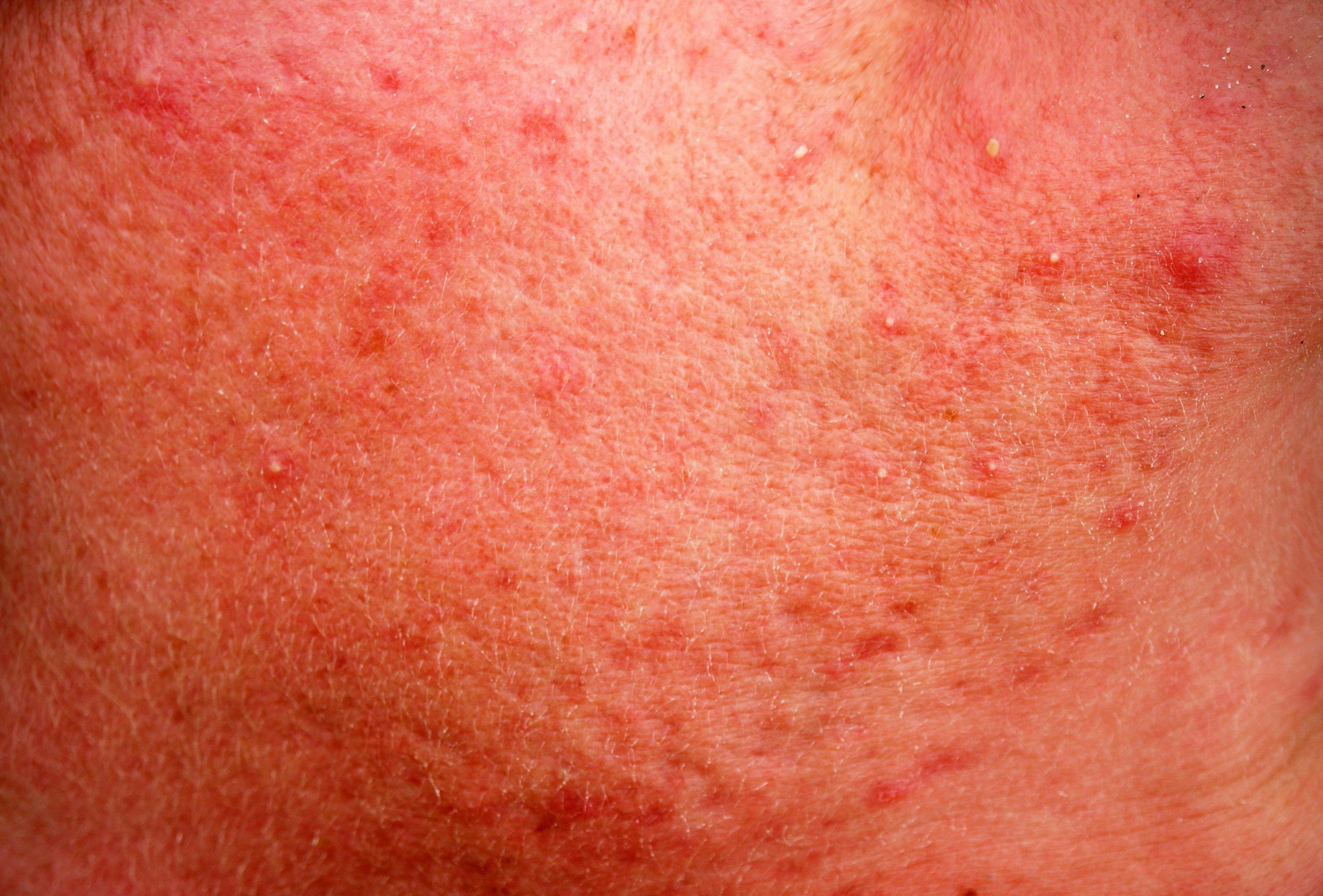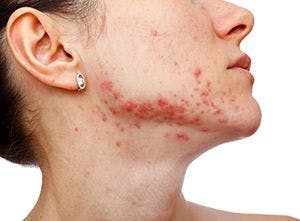- Acne
- Actinic Keratosis
- Aesthetics
- Alopecia
- Atopic Dermatitis
- Buy-and-Bill
- COVID-19
- Case-Based Roundtable
- Chronic Hand Eczema
- Chronic Spontaneous Urticaria
- Drug Watch
- Eczema
- General Dermatology
- Hidradenitis Suppurativa
- Melasma
- NP and PA
- Pediatric Dermatology
- Pigmentary Disorders
- Practice Management
- Precision Medicine and Biologics
- Prurigo Nodularis
- Psoriasis
- Psoriatic Arthritis
- Rare Disease
- Rosacea
- Skin Cancer
- Vitiligo
- Wound Care
Publication
Article
Dermatology Times
Tape strips detect eczema, psoriasis biomarkers
Author(s):
Tape strips outperformed skin biopsies by differentiating eczema from psoriasis with high accuracy, researchers report.
Researchers often sample the skin of subjects with atopic dermatitis and psoriasis with biopsies. While useful for the information they provide, biopsies are invasive, cause pain and scarring. The need for multiple or sequential skin biopsies can be particularly challenging, according to Emma Guttman-Yassky, M.D., Ph.D., the incoming chair of dermatology at the Icahn School of Medicine at Mount Sinai and the Mount Sinai Health System.
So, Dr. Guttman-Yassky was happy to adapt a noninvasive way of using a type of tape strip to sample the skin. The strips not only rival biopsies for accurately detecting distinct immune and barrier signatures in lesional and nonlesional atopic dermatitis and psoriasis skin. Tape strips also revealed a single gene biomarker, nitride oxide synthase 2 (NOS2), that differentiates atopic dermatitis from psoriasis with 100% accuracy, according to their study published July 21 in the Journal of Allergy and Clinical Immunology.1
“We as dermatologists see patients in the clinic that we often debate between psoriasis and atopic dermatitis. They’re what we call psoriasiform dermatitis. We get the biopsies then ask ourselves, should we put them on psoriasis medication? Should we put them on an eczema medication?” Dr. Guttman-Yassky says. “Having a biomarker like this, you can identify the disease easily with a single tape strip.”
While the most immediate use of the tape strips will be for research purposes, Dr. Guttman-Yassky said she sees the tape strips making it to the clinic.
“I foresee that this will also help in diagnostics and in appropriate treatment for either psoriasis or eczema, because the treatments are so different,” she says.
Researchers obtained 20 tape strips (D-Squame, CuDerm) from each subject. The samples included lesional and nonlesional skin from 20 adults with moderate-to-severe atopic dermatitis, 20 adults with moderate-to-severe psoriasis, as well as skin from 20 healthy controls.
RNA sequencing of the strips showed the noninvasive technology detected RNA-sequence profiles in 96 of 100 samples. The tape strips of atopic dermatitis skin revealed 4,123 genes expressed that were not in normal skin. In psoriatic skin, 5,390 genes were expressed that weren’t in the controls’ skin.
While psoriasis subjects’ skin showed marked differentiation between lesional and nonlesional tape strip samples, nonlesional atopic dermatitis skin was similar to samples in lesional areas.
Like in biopsies, the tape strips for atopic dermatitis and psoriasis skin showed increased levels of dendritic cell and T-cell markers, including CD3, ITGAX/CD11c, and CD83. Tape strips also confirmed characteristically strong TH2 expression in atopic dermatitis skin, including IL-13, CCL17/TARC and CCL18. Psoriasis featured higher levels of TH17-related (IL-17A/F and IL-36A/IL-36G), TH1-related (IFN-γ and CXCL9/CXCL10), and innate immunity-related (nitric oxide synthase 2/inducible nitric oxide synthase and IL-17C) expression, according to the study.
“Many people have tried to do noninvasive techniques to sample the skin. But in many of these studies, the recovery of material from samples was small,” she says. “We have close to 100% sample recovery both for eczema and psoriasis and for normal skin.”
Tape stripping the skin involves applying the tape multiple times to the same area, which allows for the extraction of protein or RNA for biomarkers, according to Dr. Guttman-Yassky. The resulting skin redness goes away in about 30 minutes, she said.
“My group has been involved in a lot of biomarker studies in both eczema and psoriasis. We really replicated what we found with biopsies using tape strips,” she said. “Eczema is a Th2 (T-helper 2) driven disease and psoriasis, we know, is a TH 17-driven disease.”
As for the finding that nitride oxide synthase 2 differentiates atopic dermatitis from psoriasis with 100% accuracy, Dr. Guttman-Yassky said atopic dermatitis patients have zero nitride oxide synthase 2, while the biomarker is very elevated in psoriasis.
Mount Sinai researchers will continue to investigate the use of the tape strips for dermatological disease sampling. Dermatologists’ clinical use of the strips might be in a year or longer. And chances are that dermatologists would have to send the samples to a lab for analyzing, at least at first, she says.
Disclosures:
Dr. Guttman-Yassky is an employee of Mount Sinai and has received research funds from AbbVie, Celgene, Eli Lilly, Janssen, Medimmune/AstraZeneca, Novartis, Pfizer, Regeneron, Vitae, Glenmark, Galderma, Asana, Innovaderm, Dermira, and UCB. Dr. Guttman-Yassky is also a consultant for Sanofi Aventis, Regeneron, Stiefel/GlaxoSmithKline, MedImmune, Celgene, Anacor, AnaptysBio, Dermira, Galderma, Glenmark, Novartis, Pfizer, Vitae, Leo Pharma, AbbVie, Eli Lilly, Kyowa, Mitsubishi Tanabe, Asana Biosciences, and Promius.
Reference:
He H, Bissonnette R, Wu J, et al. Tape strips detect distinct immune and barrier profiles in atopic dermatitis and psoriasis [published online ahead of print, 2020 Jul 9]. J Allergy Clin Immunol. 2020;S0091-6749(20)30824-1. doi:10.1016/j.jaci.2020.05.048.
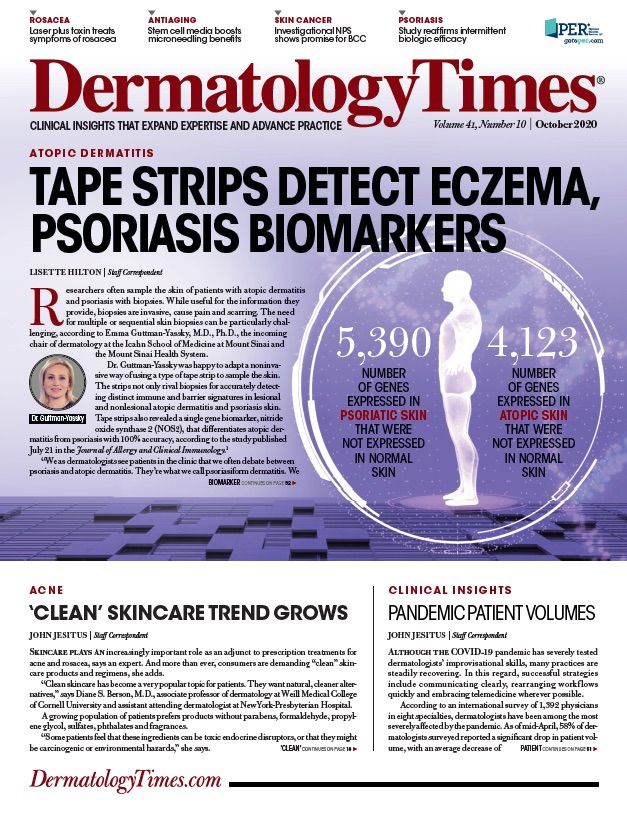
Newsletter
Like what you’re reading? Subscribe to Dermatology Times for weekly updates on therapies, innovations, and real-world practice tips.



